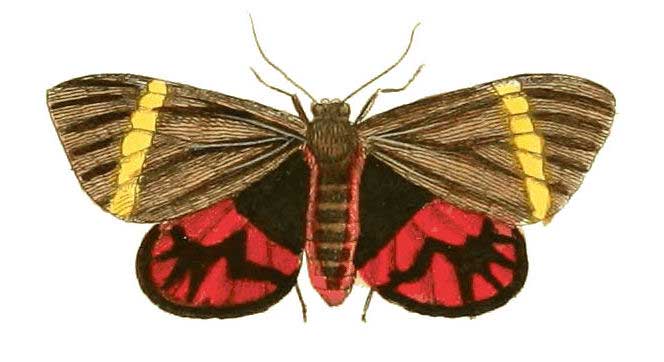Superregnum: Eukaryota
Cladus: Unikonta
Cladus: Opisthokonta
Cladus: Holozoa
Regnum: Animalia
Subregnum: Eumetazoa
Cladus: Bilateria
Cladus: Nephrozoa
Cladus: Protostomia
Cladus: Ecdysozoa
Cladus: Panarthropoda
Phylum: Arthropoda
Subphylum: Hexapoda
Classis: Insecta
Cladus: Dicondylia
Subclassis: Pterygota
Cladus: Metapterygota
Infraclassis: Neoptera
Cladus: Eumetabola
Cladus: Endopterygota
Superordo: Panorpida
Cladus: Amphiesmenoptera
Ordo: Lepidoptera
Subordo: Glossata
Cladus: Coelolepida
Cladus: Myoglossata
Cladus: Neolepidoptera
Infraordo: Heteroneura
Cladus: Eulepidoptera
Cladus: Ditrysia
Cladus: Apoditrysia
Cladus: Obtectomera
Cladus: Macroheterocera
Superfamilia: Noctuoidea
Familia:Erebidae
Subfamilia: Arctiinae
Genus: Curoba
Species: C. fasciata – C. mopsa – C. sangarida
Name
Curoba Walker, 1865

Curoba sangarida
Curoba is a monotypic moth genus in the subfamily Arctiinae erected by Francis Walker in 1865. It contains the single species Curoba sangarida, first described by Caspar Stoll in 1782, which is found in southern India and Sri Lanka.[1]
Description
Upperside: Antennae filiform and black. Thorax and abdomen chocolate, the latter edged with red. Anterior wings entirely of a dun chocolate colour, having a lemon-coloured streak crossing them from the lower corners to near the middle of the anterior edges. Posterior wings next the body almost black; the remainder carmine, with a waved black line crossing them from the upper to the abdominal corners.[2]
Underside: Palpi grey. Breast red, with two black spots on each side. Legs grey. Wings coloured as on the upperside; the red colour on the inferior ones reaching to the body. Margins of the wings entire. Wingspan 1+3⁄4 inches (44 mm).[3]
Taxonomy
Curoba is not a member of Arctiidae, because females have no anal glands; according to male genitalia, it is related to a noctuid subfamily Eligminae.
G
References
Savela, Markku. "Curoba Walker, [1865]". Lepidoptera and Some Other Life Forms. Retrieved January 14, 2019.
Hampson, G. F. (1894). The Fauna of British India, Including Ceylon and Burma: Moths Volume II. Taylor and Francis – via Biodiversity Heritage Library.
Drury, Dru (1837). Westwood, John (ed.). Illustrations of Exotic Entomology. Vol. 3. pp. 24-5. pl. III.
Pitkin, Brian & Jenkins, Paul. "Search results Family: Arctiidae". Butterflies and Moths of the World. Natural History Museum, London.
Retrieved from "http://en.wikipedia.org/"
All text is available under the terms of the GNU Free Documentation License

